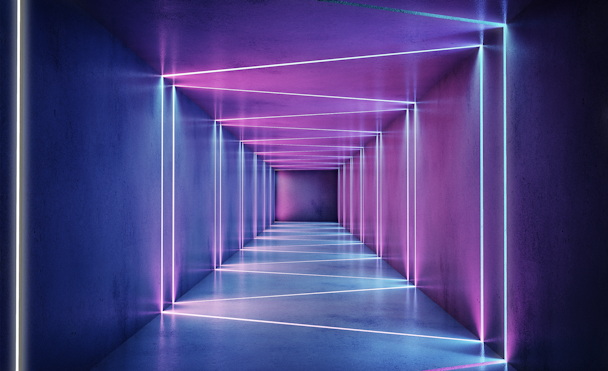It’s time for brand experience to go electric, not hybrid
If you have the word ’hybrid’ on your 2021 marketing bingo card, congratulations. Winner-winner DoorDash dinner.

It’s time for brand experience to go electric, not hybrid
Yes, 2021 has just begun, but the term ’hybrid’ is already this year’s version of ’pivot’ and ’new normal’. It’s everywhere and it’s not going anywhere. Hybrid workplaces, hybrid learning, hybrid IT, hybrid concerts and the list goes on.
But there’s a fundamental difference between hybrid brand experiences and hybrid just about everything else – and that difference is audience.
Take the hybrid learning environment, for example. In most cases, each student is experiencing both in-person learning and distance learning at different points in time. The same generally goes for hybrid workplaces. In a hybrid workplace, a worker might come into the office half of the time and work remotely the other half.
The notion of a hybrid brand experience is that smaller groups of people experience something in-person while larger groups of people experience it virtually. And that’s where the difference exists. They are two (or more) distinct audiences. Broadly speaking, designing for digital and designing for IRL require very different approaches and meet very different needs.
That’s not to say it can’t be done or done well. One example is the Olympics. There’s an incredible experience that takes place for a live audience across multiple venues but, at the same time, networks around the world create rich experiences for those who cannot attend by blending high-quality on-site studio content with behind-the-scenes moments and, of course, cutting to the competition itself.
Most brands, however, do not have an Olympic-sized budget or timeline. That’s why while hybrid experiences are not new, they are also not our new normal. Sure, some events, particularly corporate events, may ’go hybrid’ for a while. Still others may actually stay virtual. But the vast majority of brand experiences will return to live as soon as they safely can. Concerts and sporting events, of course, but conferences and trade shows, too.
Because as soon as people feel they can (and governments allow it), they are going to run not walk back to live experience. And when they do, we must resist the temptation to run back alongside them waving our pre-Covid playbook.
We’ve come too far to go back.
Even with the halt of live, the human need and desire for experiences proved out. The style of experiences changed (live to virtual, stages to sets, etc) but experiences remained a critical way to engage and communicate. And among this changed and changing landscape, innovation accelerated. Years of digital adoption and innovation happened in weeks, with entire events and portfolios shifted to digital platforms (eg CES) and audience expectations drastically evolved.
We learned (quickly) the many benefits of using virtual in the right way, from extended reach to transmedium storytelling and everything in between.
Yes, the halt of ’live’ sucked the life out of some brand experiences. But when it was done right, it was really exciting. The NFL proved with its virtual draft that you could put on a strong digital experience and keep viewers’ engagement over time. The three-day broadcast featured more than 600 camera feeds from the homes of draft prospects, coaches, general managers and fans, as well as NFL commissioner Roger Goodell who announced picks from his basement.
Facebook pivoted a live experience to virtual in four weeks. It was so inspiring it became a regular thing. And the most beloved and controversial art prize in Australia had to change its format for the first time in almost a century. A behind-the-scenes experience captivated audiences and boasted a 0% drop off.
Even the DNC proved you could engage an audience in new ways (we see you, Calamari Man).
That’s why the biggest mistake brands and marketers can make when audiences return, big or small, is to go back to the way things were. The opportunity to reimagine what a brand experience can be is here. Now.
And as we reimagine, we must remember: from an audience perspective, there are no virtual, hybrid or live experiences. Only good ones and bad ones. What people want post-Covid isn’t hybrid. It’s electric, powered from a completely different energy source. They’ve been waiting 12 months and counting. They want experiences that make up for lost time.
So, call it hybrid, or even the new hybrid. Call it mixed or blended. What matters is not what you call it, but how you think about it. Ultimately, this is all about experience design for a new age – having the tenacity to craft user journeys that weave between digital and IRL moments, playing to the strengths of each and creating a rich experience journey between them.
Early in the pandemic, one of our clients boldly claimed that “experiential marketing as we knew it is no longer”. Winner-winner. They were right. Experiential marketing will never be the same again.
And that couldn’t be more electric.
Shelley Elkins, chief creative officer, Jack Morton.
Content by The Drum Network member:

Jack Morton
No one sets out to be average. No one aspires to be ordinary. Jack Morton is an award-winning global brand experience agency that exists to reimagine what an experience...
Find out more
